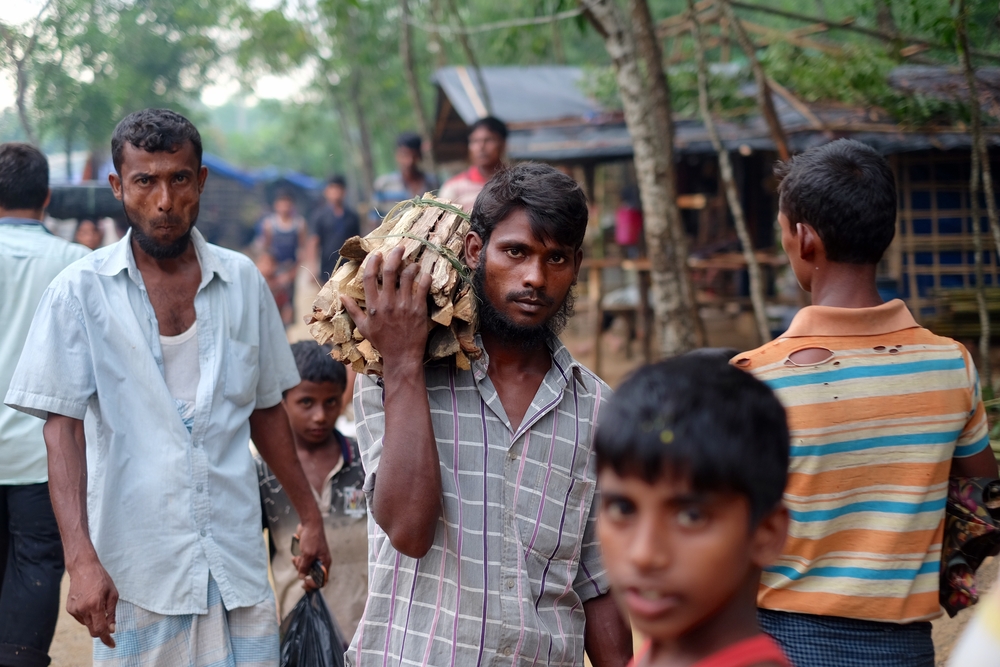News
Myanmar bulldozes what is left of Rohingya Muslim villages
BANGKOK — First, their villages were burned to the ground. Now, Myanmar’s government is using bulldozers to literally erase them from the earth — in a vast operation rights groups say is destroying crucial evidence of mass atrocities against the nation’s ethnic Rohingya Muslim minority.
Satellite images of Myanmar’s troubled Rakhine state, released to The Associated Press by Colorado-based DigitalGlobe on Friday, show that dozens of empty villages and hamlets have been completely levelled by authorities in recent weeks — far more than previously reported. The villages were all set ablaze in the wake of violence last August, when a brutal clearance operation by security forces drove hundreds of thousands of Rohingya into exile in Bangladesh.
While Myanmar’s government claims it’s simply trying to rebuild a devastated region, the operation has raised deep concern among human rights advocates, who say the government is destroying what amounts to scores of crime scenes before any credible investigation takes place. The operation has also horrified the Rohingya, who believe the government is intentionally eviscerating the dwindling remnants of their culture to make it nearly impossible for them to return.
One displaced Rohingya woman, whose village was among those razed, said she recently visited her former home in Myin Hlut and was shocked by what she saw. Most houses had been torched last year, but now, “everything is gone, not even the trees are left,” the woman, named Zubairia, told AP by telephone. “They just bulldozed everything … I could hardly recognize it.”
The 18-year-old said other homes in the same area that had been abandoned but not damaged were also flattened. “All the memories that I had there are gone,” she said. “They’ve been erased.”
Myanmar’s armed forces are accused not just of burning Muslim villages with the help of Buddhist mobs, but of carrying out massacres, rapes and widespread looting. The latest crisis in Rakhine state began in August after Rohingya insurgents launched a series of unprecedented attacks on security posts.
Aerial photographs of levelled villages in northern Rakhine State were first made public Feb. 9 when the European Union’s ambassador to Myanmar, Kristian Schmidt, posted images taken from an aircraft of what he described as a “vast bulldozed area” south of the town of Maungdaw.
Satellite imagery from DigitalGlobe indicates at least 28 villages or hamlets were levelled by bulldozers and other machinery in a 30-mile (50-kilometre) radius around Maungdaw between December and February; on some of the cleared areas, construction crews had erected new buildings or housing structures and helipads. A similar analysis by Human Rights Watch on Friday said at least 55 villages have been affected so far.
The images offer an important window into what is effectively a part of Myanmar that is largely sealed off to the outside world. Myanmar bars independent media access to the state.
The government has spoken of plans to rebuild the region for months, and it has been busily expanding roads, repairing bridges, and constructing shelters, including dozens at a large transit camp at Taungpyo, near the Bangladesh border. The camp opened in January to house returning refugees; but none have arrived and Rohingya have continued to flee.
Myint Khine, a government administrator in Maungdaw, said some of the new homes were intended for Muslims. But that does not appear to be the case for the majority of those built or planned so far, and many Rohingya fear authorities are seizing land they’ve lived on for generations.
One list, published by the government in December, indicated 787 houses would be constructed, most of them for Buddhists or Hindus. Only 22 of the houses were slated for “Bengalis” — the word Myanmar nationalists often use to describe the Rohingya, who they say are illegal migrants from Bangladesh.
Myint Khine said the government had no ulterior motive.
“Of course we have been using machines like earth removers and bulldozers because we have to clear the ground first before building new houses,” he said.
Chris Lewa, whose Arakan Project monitors the persecuted Muslim minority’s plight, said the degree to which the villages had been razed would make it even harder for the Rohingya, who have no citizenship and few rights, to ever reclaim their land.
“How will they identify where they lived, if nothing is left, if nothing can be recognized?” Lewa said. “Their culture, their history, their past, their present — it’s all being erased. When you see the pictures, it’s clear that whatever was left — the mosques, the cemeteries, the homes — they’re gone.”
Richard Weir, a Myanmar expert with Human Rights Watch, said on the images he had seen, “there’s no more landmarks, there’s no trees, there’s no vegetation.”
“Everything is wiped away, and this is very concerning, because these are crime scenes,” he said. “There’s been no credible investigation of these crimes. And so, what we’re talking about really is obstruction of justice.”
Both Weir and Lewa said no mass graves were known to have been destroyed. But, Weir added: “We don’t know where all the graves are … because there is no access.”
Zubairia, who asked that only one of her names be used to protect her identify because she feared reprisals, said she did not believe any of the newly constructed homes were intended for Rohingya.
“Even if they give us small houses to live in, it will never be the same for us,” she said. “How can we be happy about our houses being ripped off from our land?
”






















